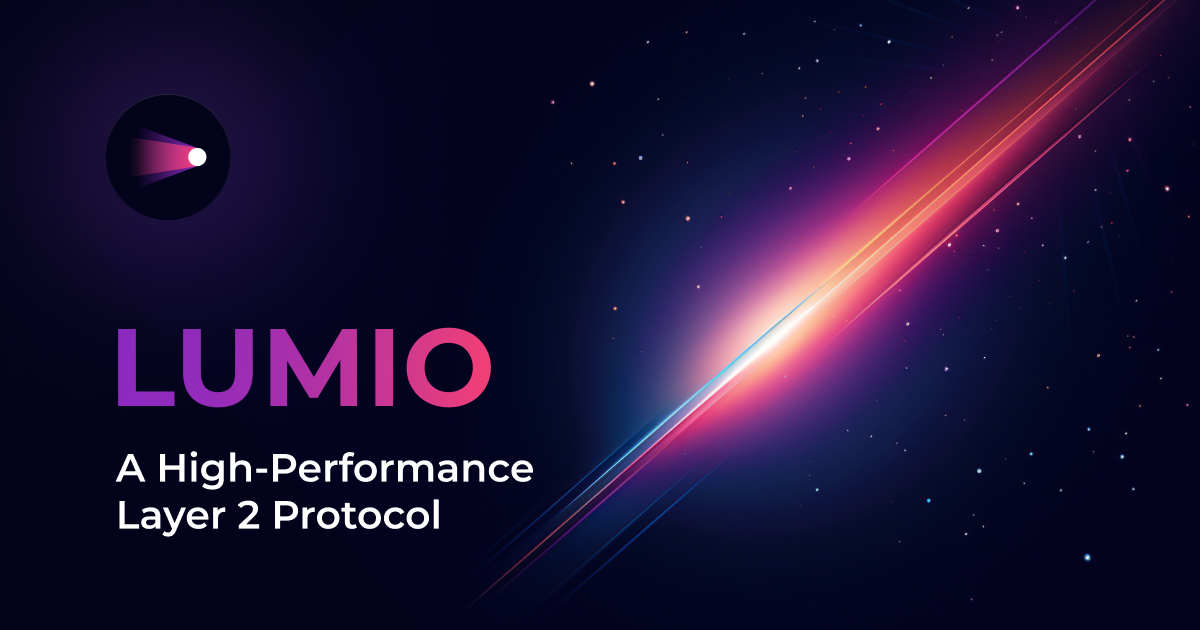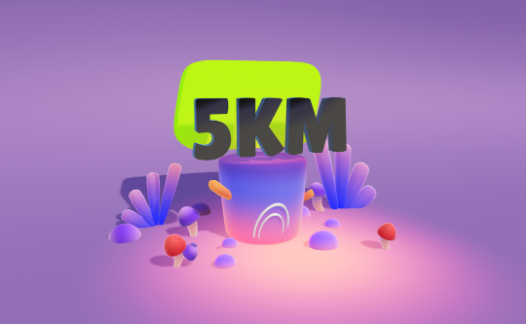
In the ever-evolving world of blockchain technology, scalability remains one of the most significant challenges. While cryptocurrencies and decentralized applications have gained tremendous popularity, their widespread adoption has been hindered by high transaction fees and limited throughput. Shardeum emerges as a groundbreaking solution to these issues, introducing a revolutionary approach to scaling blockchain networks while maintaining decentralization and security.
Shardeum is an EVM-based Layer 1 blockchain designed for horizontal scalability and parallel transaction execution with low gas fees forever. By leveraging innovative technologies like dynamic state sharding and auto-scaling, Shardeum addresses the fundamental limitations of existing blockchains that struggle to match Web2’s scalability. This comprehensive guide explores Shardeum’s core features, SHM token utilities, and its potential to transform the blockchain landscape.
Key Takeaways
- Shardeum is an EVM-compatible Layer 1 blockchain solving the trilemma through dynamic state sharding and auto-scaling.
- SHM token functions include transaction fees, staking, governance, and rewards, with all fees burned to create deflationary pressure.
- Linear scaling means adding nodes directly increases transaction throughput, while maintaining consistently low fees regardless of network congestion.
- Founded by Omar Syed and Nischal Shetty, Shardeum maintains cross-shard composability and low validator entry barriers to enhance decentralization.
- Mainnet launch is scheduled for Q1 2025, with smart contract functionality and complete auto-scaling implementation following later that year.
What is Shardeum (SHM)?
Shardeum is an EVM-based Layer 1 blockchain that scales horizontally, delivering high speed and low gas fees without sacrificing security or decentralization. As a sharded, Ethereum-compatible, smart contract platform, Shardeum is powered by the Shardus protocol, which employs dynamic state sharding, cross-shard atomic composability, auto-scaling, linear scaling, and other novel technological innovations designed to solve the blockchain trilemma.
The native coin on Shardeum is “Shard” with “SHM” as its ticker symbol. SHM serves multiple functions within the Shardeum ecosystem, including transaction fees payment, validator staking, governance, and rewards distribution. With its unique architecture, Shardeum aims to enable applications like AI and trading platforms to scale affordably on its network, merging blockchain’s benefits with the ability for users to maintain control over their resources, free from central points of failure.
What is the Relationship Between Shardeum and SHM Token?
Shardeum refers to the entire blockchain platform and infrastructure, while SHM is the native cryptocurrency of this network. This relationship can be compared to how Ethereum is a blockchain platform and ETH is its native token.
SHM has multiple functions within the Shardeum ecosystem:
- It serves as the primary medium of exchange on the Shardeum network
- It enables users to pay for transaction and gas fees
- It allows holders to participate in network governance
- It can be staked by validators to secure the network and earn rewards
In the cryptocurrency space, the terms coin and token are often used interchangeably, especially on Ethereum-compatible platforms. Since SHM is the native currency of Shardeum, it is technically a coin. Nonetheless, SHM can very well be referred to as a ‘token’, as a tokenized version will be used in the context of smart contracts and certain utilities, aligning with common industry terminology.

What Does Shardeum Aim For? Solving the Blockchain Trilemma
The blockchain industry faces a unique challenge: it must efficiently scale, become user-friendly, and reduce costs as demand grows, all while maintaining high levels of decentralization—a requirement traditional systems don’t need to fulfill. This three-dimensional problem is known as the “blockchain trilemma,” where conventional blockchains can only optimize for two out of three key properties: scalability, security, and decentralization.
Early Layer 1 blockchains like Bitcoin self-limited their scalability to prioritize security and decentralization. This lack of scalability has led to continued reliance on traditional centralized institutions, which historically have been prone to exclusivity, misuse of power, and lack of transparency.
The specific problems Shardeum aims to solve include:
- Limited Scalability: Existing Layer 1 blockchains have architectural limitations and rely on vertical scaling, which curtails scalability once maximum TPS is reached, resulting in network congestion and high gas fees during peak demand.
- High Transaction Fees: During times of network congestion, transaction fees can increase exponentially, making many use cases for blockchain technology economically unfeasible.
- Poor User Experience: High fees and slow transaction confirmation times create a poor user experience, hindering mainstream adoption.
- Compromised Decentralization: Many scaling solutions sacrifice decentralization to achieve higher throughput, going against the core principles of blockchain technology.
- Limited Application Possibilities: Current blockchain limitations prevent the development of complex, high-throughput applications like AI and trading platforms.
Shardeum Founders and Roadmap: From Concept to Mainnet Launch
Shardeum’s development journey began with its foundational technology, Shardus, which has been under development since 2016. Omar Syed, a systems architect with experience building scalable systems for organizations like NASA and Yahoo, started working on a distributed ledger design that would process transactions independently without grouping them into blocks, making it easier to shard the ledger.
Here’s the timeline of Shardeum’s development:
- Q2 2016: Omar Syed began working on the design of a distributed ledger (later named Shardus).
- Q3 2021: The Shardus team demonstrated linear scaling and auto-scaling by growing a sharded token transfer network to 1000 nodes and achieving 5000 TPS.
- Q4 2021: Nischal Shetty, Founder and CEO of WazirX, invited Syed to Dubai to discuss creating a smart contract platform based on Shardus technology, giving birth to the idea of Shardeum.
- Q1 2022: The Shardeum Liberty Alphanet was launched on February 2nd, 2022, allowing the community to deploy EVM-compatible smart contracts.
- Q1 2023: The Shardeum Sphinx Betanet was launched on February 2nd, 2023, enabling community members to run validator nodes, with over 25,000 nodes eventually joining the network.
- Q1 2024: Continued Betanet operation and completion of patent filing for technological innovations.
- Q2 2024: Open-sourcing of code and initiation of multiple open-source projects.
- Q2 2024: Launch of Atomium Incentivized Testnet in June 2024, which saw over 31,000 validators, 638,000 wallets, and 23 million transactions within the first six months.
How Does Shardeum Solve Blockchain’s Scalability Issue in Terms of TPS?
1. Dynamic State Sharding
Shardeum employs dynamic state sharding to split the network at the protocol layer into multiple shards, each capable of independently processing transactions. Unlike traditional blockchains where transactions are processed sequentially in a single chain, Shardeum’s approach enables parallel transaction execution, significantly increasing the network’s throughput while maintaining atomic composability.
2. Auto-scaling
As an industry first, Shardeum features auto-scaling capabilities that adjust its capacity based on real-time network demands. As transaction volumes increase, Shardeum dynamically scales up by adding more shards to handle the load, ensuring that performance remains high without compromising on speed or cost. This is achieved by measuring network load every cycle (60 seconds) and autonomously adjusting the required number of validator nodes.
3. Proof of Quorum (PoQ) Consensus Mechanism
Shardeum implements a unique Proof of Quorum consensus mechanism where validator nodes within multiple shards verify and process transactions. If a transaction receives approval from more than 50% of the nodes in a shard, it is processed instantly, resulting in extremely low latency and finality times. This system is reinforced by Proof of Stake as a sybil deterrence mechanism, requiring nodes to stake SHM as collateral.
4. Low Entry Barrier for Validator Nodes
Shardeum lowers the barrier to running validator nodes by requiring minimal hardware capacity, making it more accessible for community participation. The network’s intuitive GUI dashboard allows users to manage their nodes with just a few clicks, even without technical skills, enhancing decentralization.
5. Linear Scaling
Through its combination of blockless transaction processing and dynamic state sharding, Shardeum achieves true linear scaling. For example, if 100 nodes provide 50 transactions per second (TPS), then 200 nodes will provide 100 TPS. This approach allows the network to scale horizontally by adding more nodes rather than vertically by increasing the power of existing nodes.
6. Low Transaction Fees Forever
One of Shardeum’s central design goals is to ensure sustainably low transaction fees. Since Shardeum auto-scales linearly, it maintains low network maintenance costs regardless of demand, resulting in consistently low fees for end users. This opens the door for innovative use cases previously impractical on other platforms due to prohibitive costs.
7. Atomic and Cross-Shard Composability
Unlike many sharded networks that break atomic composability, Shardeum maintains the ability to invoke multiple smart contracts and chain them together within one transaction, even across different shards. This results in a better user experience and lower transaction costs, as users can execute complex operations in a single transaction.
8. EVM Compatibility
Shardeum is EVM-based, making it compatible with Ethereum’s ecosystem of tools, wallets, and smart contracts. This compatibility allows developers to easily port their Ethereum applications to Shardeum without having to learn new programming languages or frameworks, facilitating rapid adoption.

Shardeum Tokenomics: SHM Supply, Distribution and Utility
Initial Supply and Distribution
Shardeum transitioned to a dynamically responsive supply model at the start of 2025, with an initial supply of 249 million SHM distributed as follows:
- Sale: 91,440,000 SHM (36.72%) – 3-month cliff then 2-year daily linear vesting
- Team: 76,200,000 SHM (30.6%) – 3-month cliff then 2-year daily linear vesting
- Foundation: 55,880,000 SHM (22.44%) – unlocked at Token Generation Event (TGE)
- Ecosystem & Airdrops: 25,480,000 SHM (10.23%) – unlocked at TGE
Similar to Ethereum, validator rewards will be dynamically generated based on network demand rather than pre-minted, creating a more sustainable and adaptive token issuance model. Since 100% of all transaction fees are burned, SHM is expected to be deflationary over time.

Token Utility
SHM serves several important functions within the Shardeum ecosystem:
- Staking: Validators stake SHM to participate in the network, and this staked amount can be slashed if the node misbehaves, ensuring network security.
- Transaction Fees: SHM is used to pay for transaction and gas fees on the Shardeum network, with all fees being burned to create a deflationary mechanism.
- Governance: SHM holders can participate in network governance, voting on proposals and changes to network parameters.
- Rewards: SHM is distributed as rewards for network participation, including validator rewards and ecosystem incentives.
Dynamic Supply Model
Shardeum’s tokenomics follow a dynamic supply model where issuance adjusts based on network demand and economic conditions. This ensures that the network can maintain the right balance of incentives for validators while preventing excessive inflation. Depending on network conditions, the supply can be:
- Inflationary: When required to incentivize network growth and participation.
- Disinflationary: When issuance remains positive but at a declining rate over time.
- Deflationary: When demand results in burning mechanisms reducing the circulating supply.
This adaptive approach allows Shardeum to achieve supply equilibrium where the amount of SHM burned through transaction fees equals the amount issued to validators, creating a sustainable economic model for the long term.
Benefits of SHM Token: For Investors, Developers and Ecosystem
For Investors and Token Holders
- Store of Value: SHM holds potential as a store of value, providing users with a decentralized and secure means of managing their finances. Its deflationary mechanism through fee burning contributes to potential long-term value appreciation.
- Staking Returns: By staking SHM to run validator nodes, holders can earn rewards, creating a passive income stream while contributing to network security.
- Governance Rights: SHM holders can participate in shaping the future of the network through governance voting, influencing important protocol decisions.
- Potential Growth: As Shardeum’s adoption increases and more applications are built on the platform, the demand for SHM is likely to grow, potentially leading to value appreciation.
For Developers and Businesses
- Low and Predictable Transaction Costs: The consistently low gas fees on Shardeum make it economically viable to build a wider range of applications, including those with high transaction volumes or micropayment systems.
- Scalability for High-Demand Applications: Developers can build applications that require high throughput without worrying about network congestion or escalating fees during peak usage.
- EVM Compatibility: The seamless transition from Ethereum to Shardeum reduces development costs and time, allowing developers to leverage existing code and tools.
- Cross-Chain Transaction Support: SHM can potentially bridge across multiple blockchain networks, enabling seamless value transfer and asset swapping beyond the Shardeum ecosystem.
For the Broader Ecosystem
- Sustainable Blockchain Growth: SHM’s dynamic supply model ensures the network can maintain security and performance indefinitely without relying on unsustainable incentive mechanisms.
- Enhanced Decentralization: The low barrier to becoming a validator promotes greater participation in network security and consensus, leading to higher levels of decentralization.
- Support for New Use Cases: The combination of low fees, high throughput, and atomic composability enables innovative applications that aren’t feasible on other blockchains.
- Environmental Efficiency: Shardeum’s energy-efficient Proof of Stake mechanism and optimized resource usage align with global sustainability efforts.

Shardeum Mainnet Launch and Future Development Plans
Technological Evolution
Following the mainnet launch, Shardeum has planned several technological upgrades to enhance its capabilities:
- Smart Contract Functionality: Full EVM compatibility with support for complex smart contracts will be introduced in Q3 2025, allowing developers to build sophisticated decentralized applications.
- Auto-scaling Implementation: By Q4 2025, Shardeum will deploy its complete auto-scaling functionality, enabling the network to dynamically adjust its capacity based on demand.
- IPv6 Support: Future upgrades will add support for IPv6 addresses, expanding network accessibility.
- Enhanced Security Measures: Continuous security improvements will be implemented to protect against vulnerabilities and attacks.
- Storage Auto-scaling: Beyond transaction throughput, Shardeum will develop the ability to auto-scale based on storage demands.
- Multi-language Support: The validator software will be developed in additional languages beyond TypeScript, potentially including Rust.
Ecosystem Expansion
Shardeum’s future will also focus on building a vibrant ecosystem of applications and services:
- DApp Development: The platform will foster the creation of decentralized applications that leverage its unique features, particularly those that benefit from low transaction fees and high throughput.
- Cross-Chain Integration: Shardeum will continue to develop interoperability solutions, allowing assets and data to flow between Shardeum and other blockchain networks.
- Developer Tools and Resources: Enhanced tooling and resources will be provided to make building on Shardeum as accessible and efficient as possible.
- Community Engagement: Ongoing initiatives to educate and engage the community will drive adoption and participation in the network.
Path to Decentralization
A key aspect of Shardeum’s future is its commitment to progressive decentralization:
- DAO Implementation: Shardeum plans to transition governance powers from the core team to a Decentralized Autonomous Organization (DAO), giving SHM holders increasing control over the network’s future.
- Validator Diversification: As the network grows, it will aim to increase the geographic and operational diversity of validators to enhance decentralization.
- Reduced Entry Barriers: Continued efforts to lower technical and financial barriers to participation will help expand the validator base.
Shardeum vs Competitors: Why SHM Coin Stands Out
In the competitive landscape of Layer 1 blockchains, Shardeum distinguishes itself through several key advantages:
Unique Technological Approach
- True Horizontal Scaling: Unlike networks like BNB Chain, Solana, and Algorand that rely on vertical scaling (more powerful hardware), Shardeum scales horizontally by adding more nodes, achieving linear scalability without centralization.
- Dynamic State Sharding: While some projects like Near and MultiversX implement forms of state sharding, Shardeum’s dynamic approach allows for more flexible and efficient distribution of the network state across nodes.
- Auto-scaling Capability: Shardeum is the first blockchain to implement true auto-scaling, automatically adjusting network capacity based on demand, something not offered by other Layer 1 solutions.
- Atomic Cross-shard Composability: Many sharded blockchains struggle with atomic composability across shards, requiring complex coordination. Shardeum maintains this capability, enabling seamless interaction between smart contracts regardless of shard boundaries.
Economic Efficiency
- Sustainable Fee Structure: While other networks see fee spikes during high demand, Shardeum’s architecture ensures consistently low transaction fees even as adoption increases.
- Optimized Resource Utilization: The network can scale up or down based on actual usage, preventing wasted resources and unnecessary costs that would ultimately be passed to users.
- Dynamic Tokenomics: Unlike fixed-supply models or predetermined inflation schedules, Shardeum’s adaptive approach to token issuance optimizes for long-term sustainability.
Enhanced User and Developer Experience
- EVM Compatibility: While maintaining compatibility with Ethereum’s tooling and smart contracts, Shardeum removes Ethereum’s limitations on scalability and high fees.
- Low Latency and Fast Finality: Transactions on Shardeum reach finality within seconds, compared to minutes or hours on many other networks.
- Predictable Transaction Ordering: First-come-first-served transaction processing provides fairness and predictability, particularly valuable for certain applications like decentralized exchanges.
- Lower Entry Barrier: The minimal hardware requirements for running validator nodes promote broader participation and true decentralization, unlike competitors requiring expensive equipment.
Conclusion
Shardeum represents a breakthrough in blockchain technology, offering a solution to achieving scalability without sacrificing decentralization or security. Through dynamic state sharding and auto-scaling, Shardeum creates a platform supporting mainstream application demands while maintaining blockchain’s core values.
The SHM token fuels transactions, secures the network through staking, and enables governance participation, positioned to maintain value as the network grows.
Shardeum’s ability to maintain consistently low transaction fees regardless of network congestion opens the door to previously impractical applications. As it progresses toward its mainnet launch, Shardeum stands poised to become a leading platform for next-generation decentralized applications – a truly scalable, secure solution supporting Web3’s growth to billions of users.
Shardeum Airdrop Live! Join MEXC’s Exclusive SHM Token Campaign Now!
Excited about Shardeum’s revolutionary auto-scaling blockchain? MEXC is hosting an exclusive SHM airdrop event with a substantial prize pool! Complete simple tasks to participate in this groundbreaking platform that’s reshaping blockchain scalability. Don’t miss your chance – visit MEXC’s Airdrop+ page today and join the future of low-fee, high-performance smart contract platforms!
Join MEXC and Get up to $10,000 Bonus!
Sign Up


